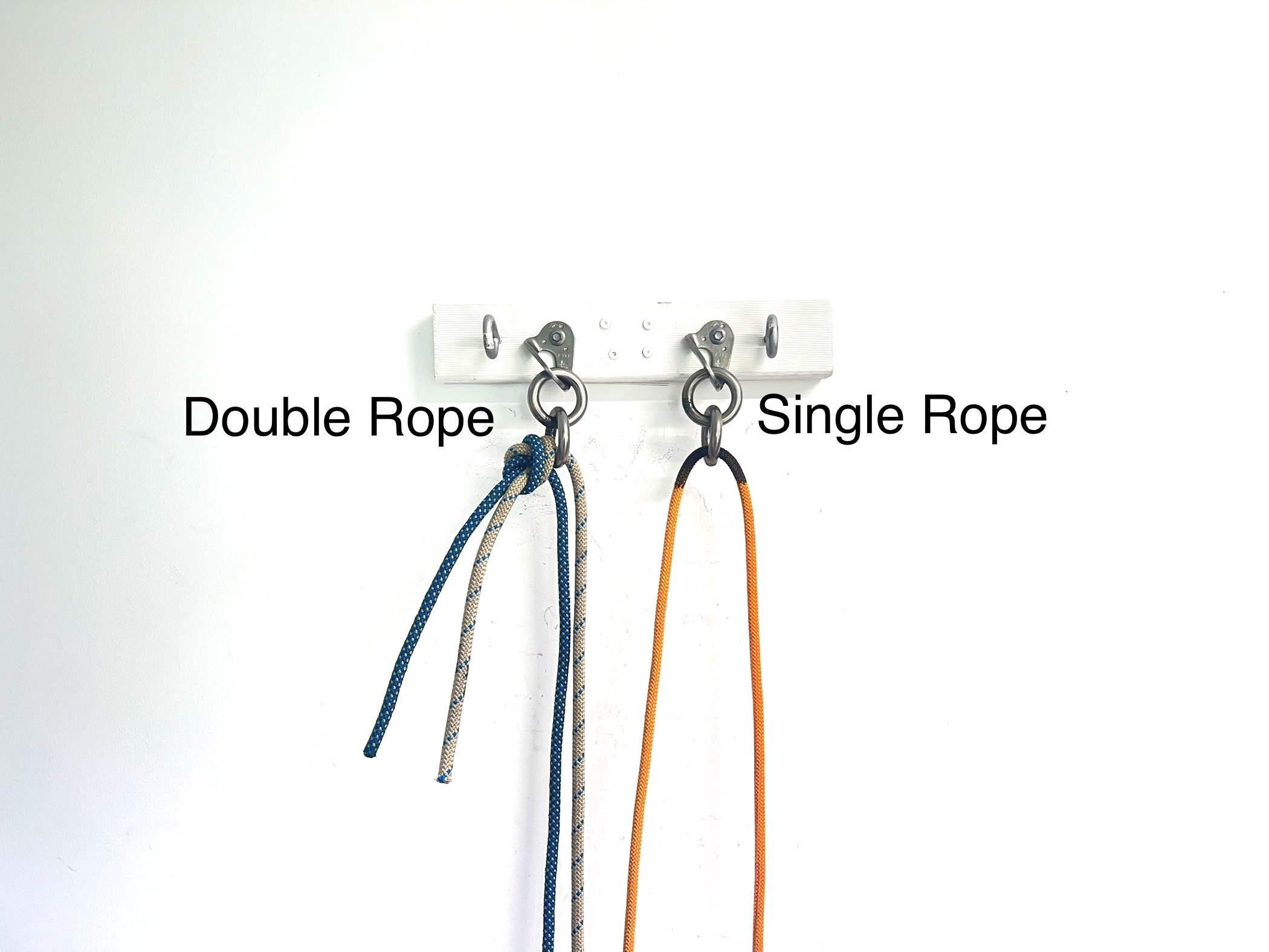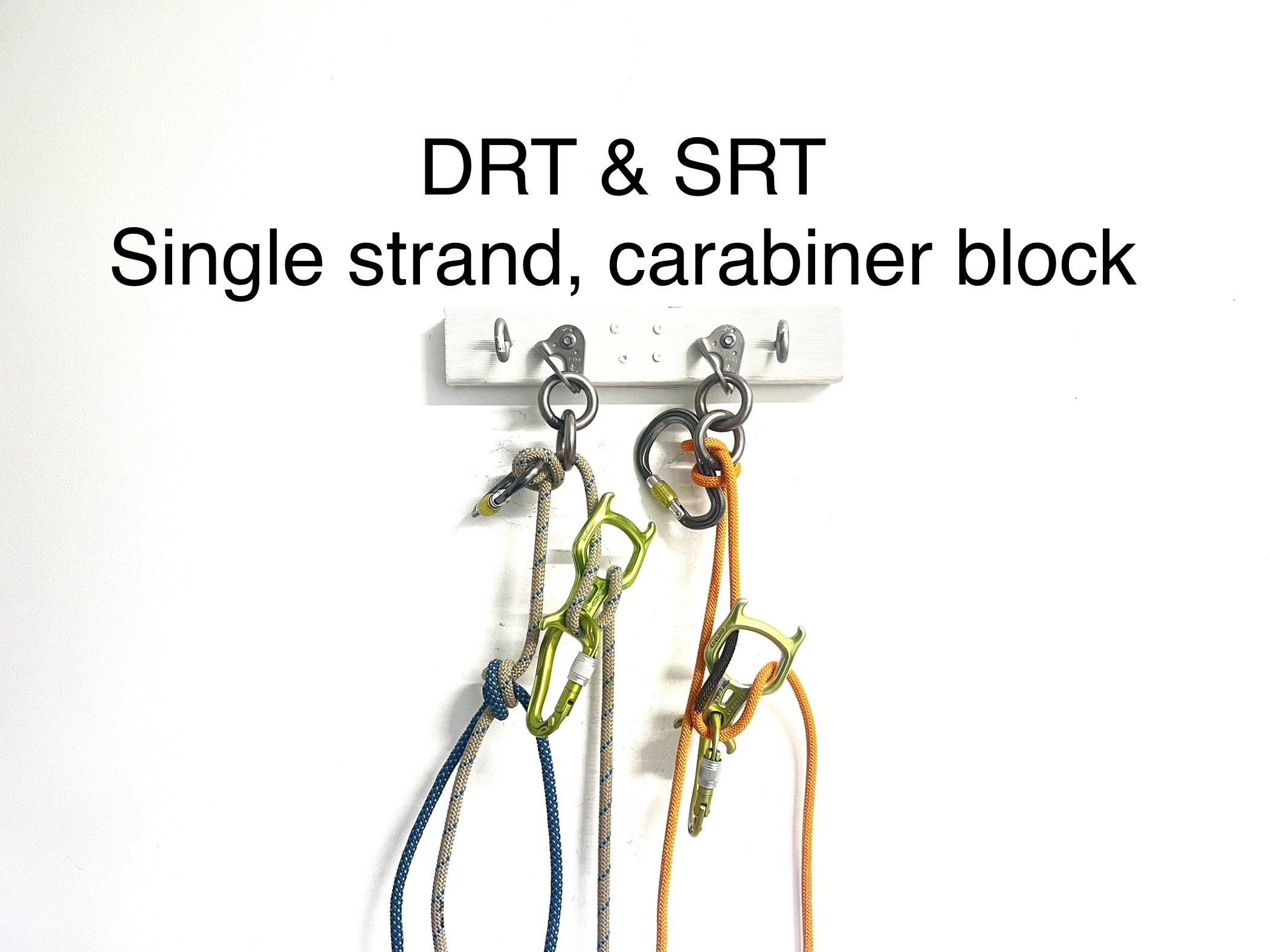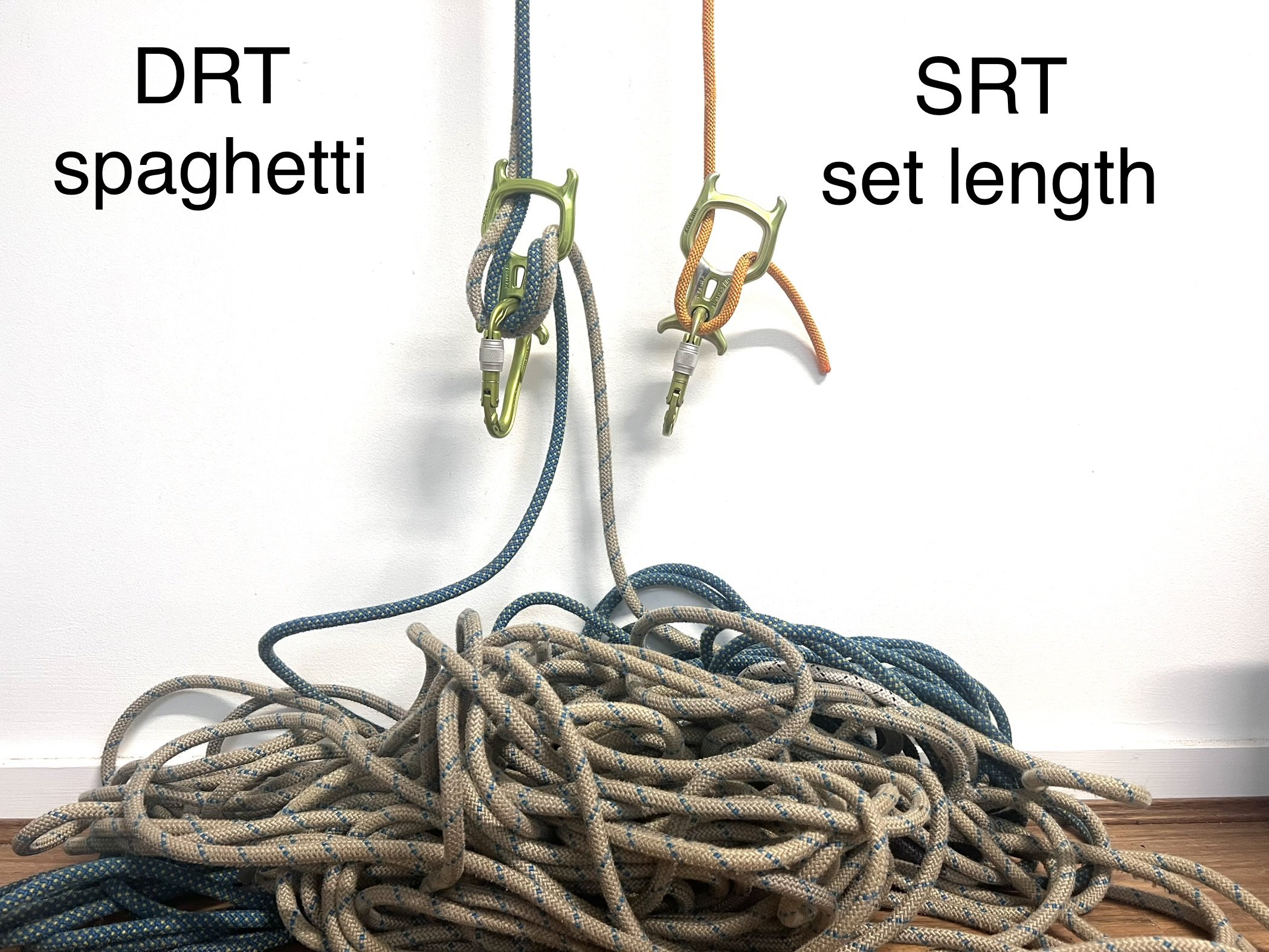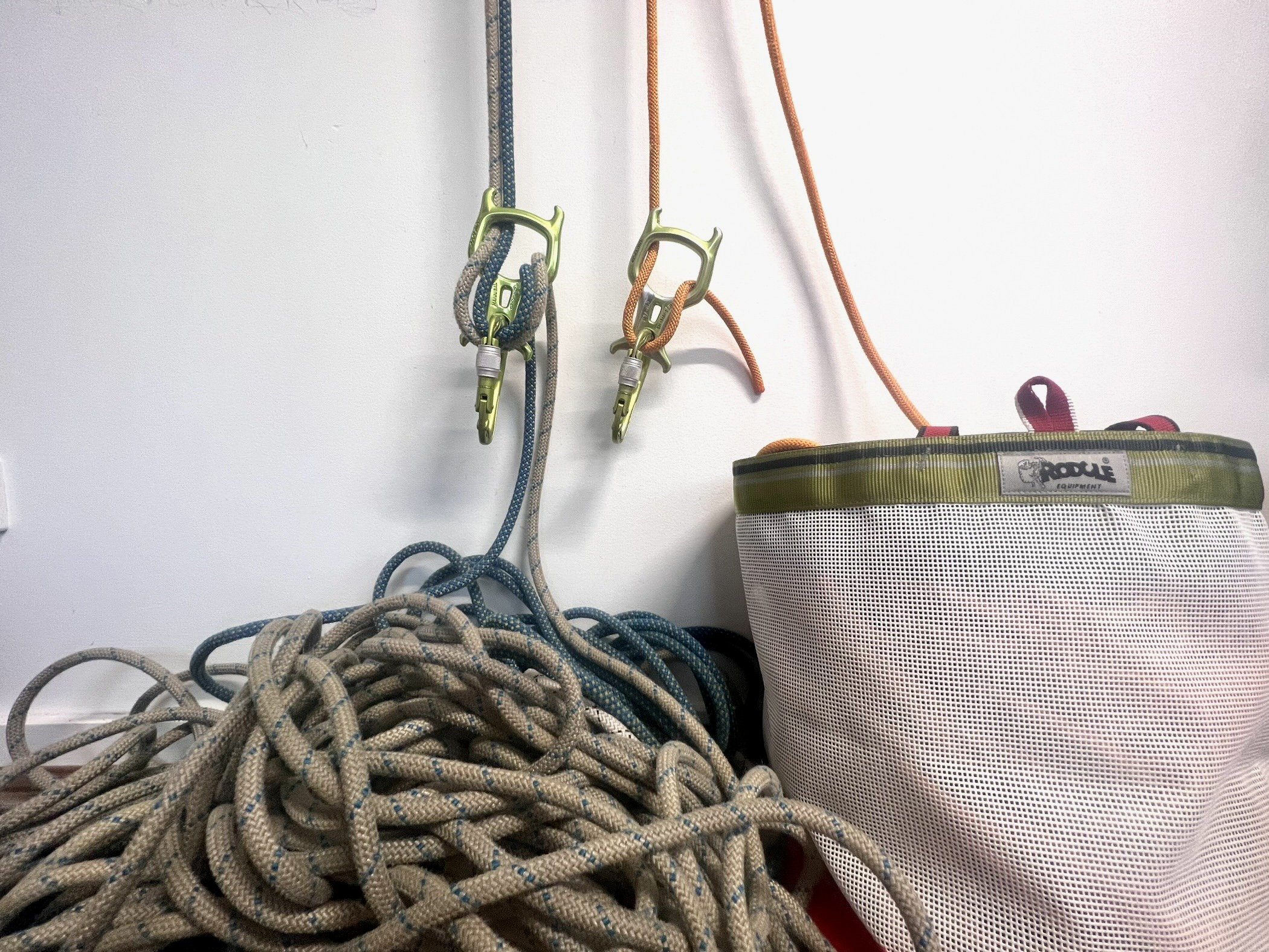#3 DRT vs SRT: How and why?
Despite assurances that the Blue Mountains does not contain truly “aquatic” canyons here is a link to a video of someone getting waterboarding (and maybe a little bit drowned) on a double rope abseil. This is at the most popular canyon in the Blue Mountains, Empress Canyon. It happens more than you’d like to see.
Instead of ending up as a helpless victim (or not helping at all) we can set up a single rope technique system in order to affect an immediate rescue. Keep this video in mind as we examine our different systems and ways to abseil.
Double Ropes vs Single Rope
DRT: A joining knot ties the tails of two different ropes together.
SRT: Find the middle of your single rope. It is often marked by the factory, or you can mark it yourself with a rope pen.
Abseil #1 Throw and go (single abseiler on two strands)
Throw both ends down, clip both strands to counterbalance each of them and abseil away.
Abseiling on two strands gives good protection against sharp edges but the entire rope is used for abseiling, with one person proceeding at a time.
There is no real separation between our systems and there is no built-in rescue system.
If someone gets stuck, they need to be able to rescue themselves.
Abseil #2: Carabiner Blocking
We can choose to abseil on a single strand by “blocking” the non-abseiling side of the rope against the anchor combination of carabiner, knot or hitch. The import part is size. The block needs needs to be big enough to prevent it slipping through the anchor point.
We might choose to do this when we prefer to abseil on a single strand for smoother abseil or for setting the correct length of an abseil.
There is still no functional difference between our systems.
NB: if a person clips onto the same side of rope that has a block, no backup and attempts to abseil they will free fall from the anchor. This is somewhat occasional cause of accidents and death.
Abseil #3 Releasable Rescue
“Releasability”, '“rig to rescue” or contingency is the key component that separates the utility of SRT and DRT.
Releasability is the ability to “feed”, “pay out” or “bleed” rope towards our abseiler.
Ideally this allows us to move them out of danger or transfer their rope into a hauling system (more on that in the future).
BUT it only really works on a single rope.
The Munter Mule Overhand (MMO)
This is a fundamental system and, in my opinion, the best starting point for learning Single Rope Technique.
By releasing the overhand knot and mule hitch we can continually feed rope into the system until the victim is on the ground, out of a hazard or in a position to self-rescue.
If we try this on a double rope, we need execute a “knot bypass” in order to pass the knot around the anchor or at least the carabiner in which the Munter hitch is hitched.
Even when well-practiced a knot bypass can take up to a couple of minutes. Not the option you want to use if you are stuck in a waterfall.
NB - Double ropes still have a place. They are a good option for dry or wilderness canyons. DRT means a group can share the load of the shorter shorter pairs double ropes compared to a single longer rope.
Abseil option #4 Double Rope Fixed vs Single Rope Releasable, two abseilers at once
This is a great system for increasing efficiency when we want two abseilers to descend and get ready to go.
By using a GiGi style plaquette (Kong Full) we can isolate two abseil ropes and have available a rescue system. We can’t perform this rescue with a fixed system.
NB- A GiGi requires supervision to ensure that the rope does not slip through the friction block. Rope slip is a potentially fatal error. These techniques are not without risk.
Rope Spaghetti vs Set Length
Not least of all the differences between our SRT and DRT is the ability to set the precise length of rope down a pitch on a single abseil.
NB - There are typically no stopper knots left in rope tails when abseiling into water.
Rope Bags
Even if you throw the rope bag down it’s still a lot neater (and ready for the pull down)
Conclusion: If it can go wrong, it will. SRT, if not an ace up your sleeve, is probably the best system to build in efficient rescue options.. Combined with its inherent efficiencies it’s a paradigm shift and utterly essential for aquatic canyoning.






